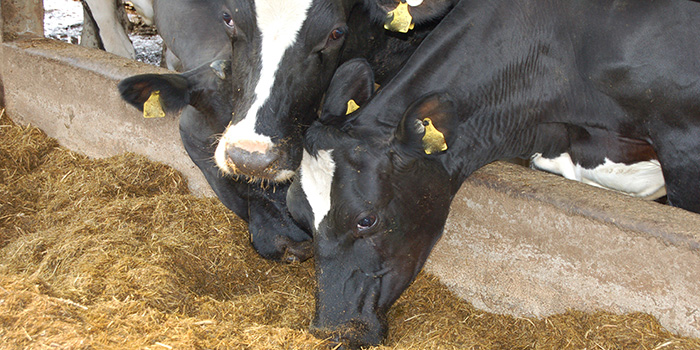Rising purchased feed costs are providing an ideal opportunity to increase margins, by ensuring optimal dry matter intake (DMI) of available forages, therefore increasing milk from forage, said nutritional supplement manufacturer UFAC-UK.
Mike Chown, UFAC-UK’s ruminant technical manager, said: “With plenty of forage on most farms this season, margins can be achieved by balancing it correctly, remembering the adage ‘feed the rumen, the rumen feeds the cow’.
“To maximise forage DMIs, we first need to know what we are feeding, so we should regularly analyse all forages, and balance them with the correct nutrients, such as sugar, starch, rumen protein, by-pass protein and rumen inert fatty acids.”
Mr Chown added: “We must ensure speed of break down in the rumen is matched, while at the same time, paying attention to acid loading and rumen pH. This will optimise rumen microbes to promote fibre digestion and intakes, most cost-effectively.”
Once microbial protein and VFAs (volatile fatty acids) from the rumen have been optimised, Mr Chown said adding ‘little bombs’ high in the specified nutrients, such as rumen inert/bypass proteins and fatty acids, will help meet the cow requirements. Forage rations are typically low in these.
“When doing this, it is important that every purchased feed is most cost-effective for the nutrient it is contributing to, for example, not just looking at crude protein, but also looking at the cost of rumen degradable and rumen undegradable protein such as amino acids,” said Mr Chown.
“It is also worth remembering that with increased forage DMI, we have increased fibre intakes, so we can reduce feeds such as malt residuals, soya hulls, palm kernel and wheatfeed, as these can restrict forage DMI.”
Increasing forage DMI will also promote higher butter fat production, reducing the need for high C16:0 palm products, which will also aid milk sustainability.
Mr Chown added: “Finally, we need to keep cows healthy and fertile and meet her specific requirements through her production cycle, so when looking at cutting feed costs, we need to ensure we target the correct animals and look after the transition and early lactation cows until confirmed in calf.”


